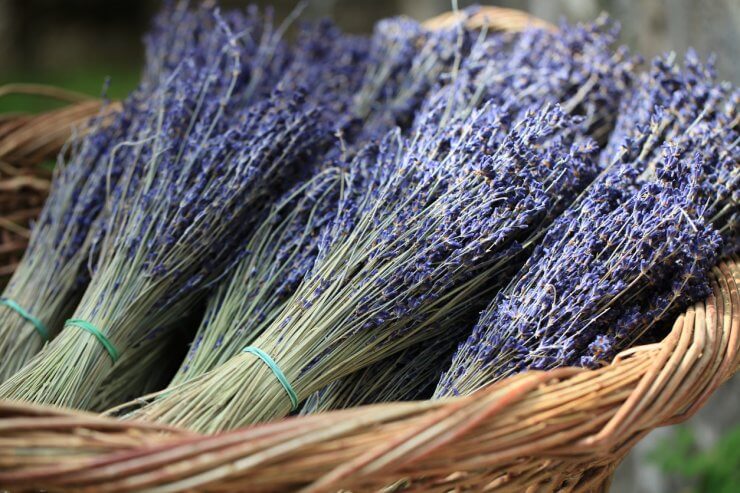
Freshly harvested lavender
If you’re growing lavender for use in the kitchen, then you really want to start harvesting your lavender stalks just before the buds open. If your lavender is starting to flower, you’re behind schedule and you need to get out in the garden with some shears, a sickle, and some rubber bands or hair ties.
When your lavender has produced just a few flowers, it’s ready to harvest. Grab a handful of stalks and cut them close to the base of the stalk, leaving a few inches of stalk behind. Don’t worry about being gentle. Lavender is a tough plant. If you find your garden shears aren’t doing the job, use a small sickle or a curved, serrated blade with a handle.
Once you have a bunch of stalks (about 50 stalks to a bunch), wrap them tightly near the bottom of the stem with a rubber band or elastic hair tie. Don’t use string or twine—when you dry your lavender, the bunch will shrink as the moisture evaporates, and then you could wind up with a floor full of lavender.
Some lavender will flower twice in a season, so check your variety to see if it does that. If you miss your opportunity to harvest all the stalks, or you decide to just let some bloom so you can enjoy them, be sure to cut the stalks back after the blooms are spent so your lavender plant can conserve its energy.
Lavender is usually dried before being used in recipes, although you can use the flower buds fresh if you want to. But drying intensifies the lavender scent and flavor, and it’s worth the wait.
If you wind up harvesting lavender blossoms, you want to use them as soon as you can. After harvesting, rinse the blossoms and remove them from the stems to use in teas, as a garnish, or as a flavor infusion for cream or ice cream.
You can also harvest the lavender leaves any time you like. They have good fragrance and flavor, too. You can use them fresh or dried to make teas or use them in cooking.


 Previous
Previous

